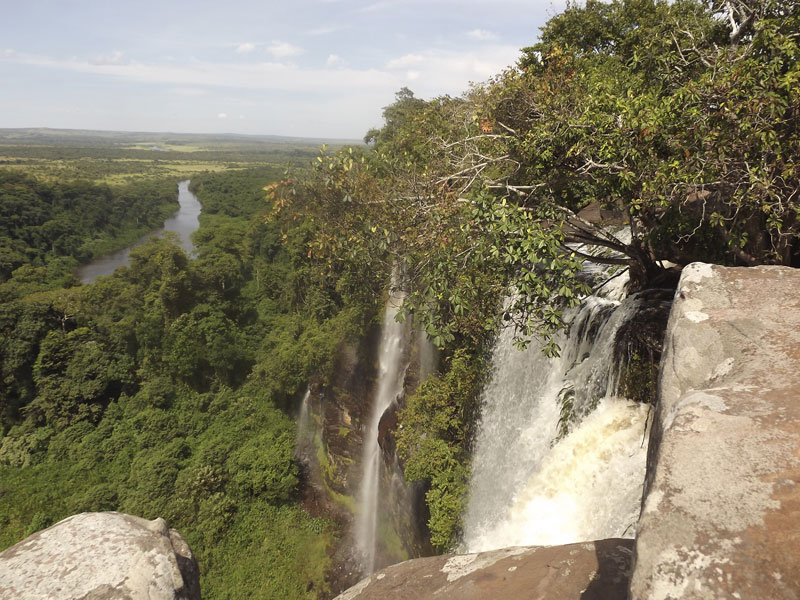With attractions such as the Kalundula Falls – Africa’s second largest – and the Kangadala National Park, the stunning Malanje province looks to become Angola’s eco-tourism center

As one of the nation’s most naturally beautiful and wonderfully biodiverse areas, Malanje undoubtedly holds some of Angola’s most exciting tourism potential.
The Kalundula Falls – just 85km from the city of Malanje – is perhaps the country’s most amazing natural wonder. At approximately 400 meters wide, Kalundula is Africa’s largest set of waterfalls behind the Victoria Falls in Zambia.
While Malanje has other relatively hidden treasures in terms of tourist attractions, such as the mysterious ancient black rock formations of Pungo Adongo (think Stonehenge in England), and the Kangadala National Park, it is no surprise that the region’s tourism promotion strategy takes its name after its most famous and most marketable landmark – Kalundula.
“The President of the Republic has created the Kalandula Development Center,” explains the Governor of Malanje, Noberto dos Santos.
“It has the objective of studying the area and defining a master plan, not only for Kalandula, but the whole municipality.”
Angola is pinning high hopes on Malanje’s tourism potential, with the provincial government, as well as the national government (given that the President himself inaugurated the region’s tourism project) believing that Malanje can become one of the country’s main tourism centers.
As Luanda – the capital city of Angola – continues to enjoy a growing influx of business tourism thanks to its booming oil and real estate industries, it is thought that Malanje has the ability to become the focus of the country’s eco-tourism offering.
Throughout Africa, the eco-tourism market is growing rapidly, as many adventurous sightseers begin to flock in increasing numbers to the continent’s unspoilt nature spots, encouraged by greater political stability, improved infrastructure and transport links and the promise of an alternative to some of the overpriced and overcrowded eco-destinations in more developed parts of the world.
In Malanje, aside from the obvious attraction of the stunning Kalandula falls, the Kangadala National Park is an equally as important part of the province’s eco tourism drive. The park is the natural habitat of the Palanca Negra; a giant sable antelope which is unique to Angola and one of the country’s most prominent national symbols.
The park – which is the home of the Lunado nature reserve – is set in dense forest and home to an abundance of different species. Apart from the famous antelope, animals regularly spotted at the park include spotted hyenas, leopards, cheetahs, monkeys, elephants, buffalo, wild boar, hippopotamus, lions, jaguars and several endangered birds.
Perhaps most notably for tourists is that Malanje is becoming growingly accessible. Major commercial airlines are now flying to the province, while the region’s road infrastructure has also been developed and can be reached via Luanda.
0 COMMENTS